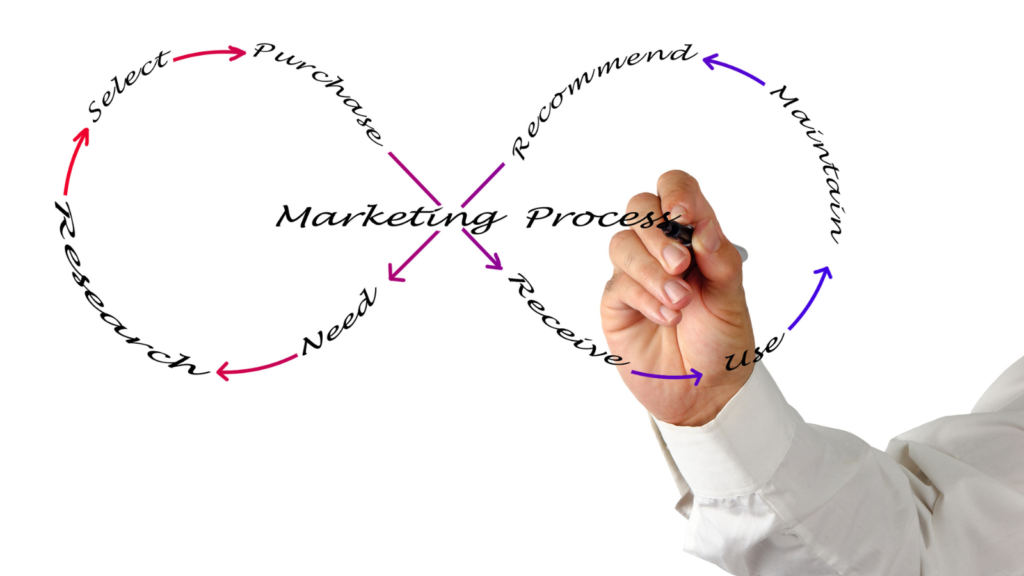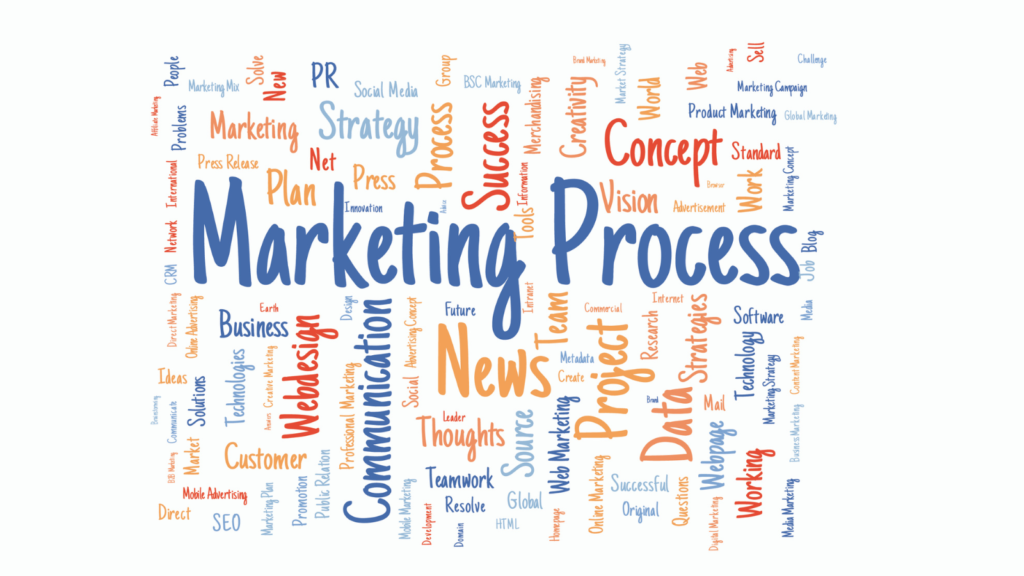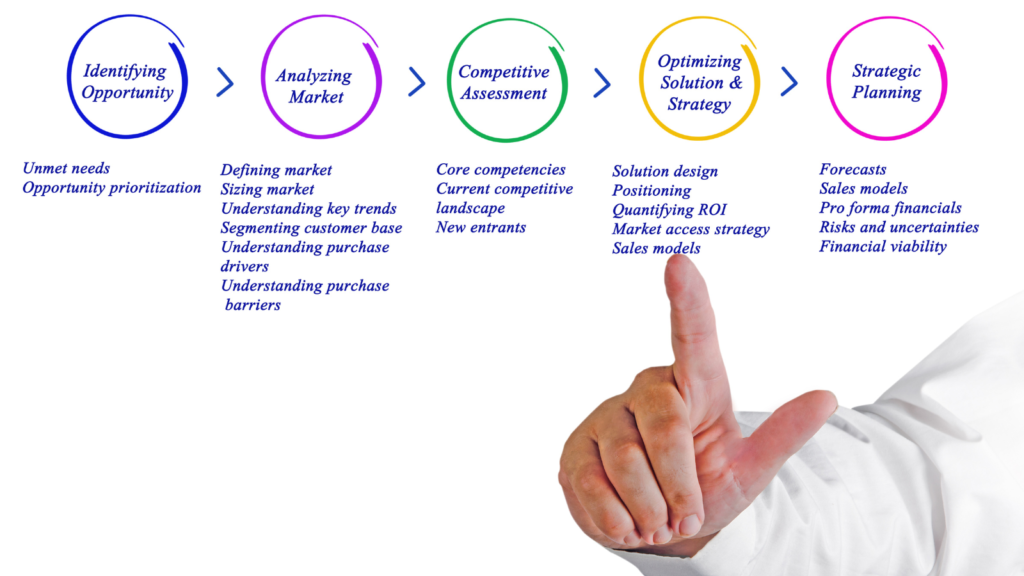In today’s digital world, effective marketing isn’t just about having the right strategy—it’s about ensuring that your marketing processes are optimised for efficiency and maximum results.
From content creation to campaign execution, every step of your workflow is crucial to driving success. But are your processes working as hard as they should?
Evaluating your marketing processes allows you to identify bottlenecks, streamline tasks, and ensure that every aspect of your strategy is aligned with your business goals.
This guide will explain the key steps to assess and enhance your marketing processes.
From mapping out your current workflows to leveraging the latest tools and avoiding common pitfalls, you’ll learn how to make data-driven adjustments that lead to better productivity, more efficient resource use, and, ultimately, greater ROI.

Ready to take your marketing to the next level? Let’s dive into how you can evaluate and optimise your processes for long-term success.
#1 Why Evaluating Your Marketing Processes Is Crucial for Growth
Marketing processes form the backbone of your entire strategy. Whether you’re running a digital ad campaign, creating content, or nurturing leads, the steps you take to execute these actions must be streamlined and efficient to produce the best results.
But too often, businesses neglect to evaluate their processes regularly, resulting in wasted resources, delayed timelines, and missed growth opportunities.
What is a Marketing Process?
A marketing process is the sequence of actions taken to move from strategy to execution. It covers everything from brainstorming and content creation to campaign implementation and performance tracking.
When these processes are optimised, they ensure consistent delivery and higher-quality outcomes. When they aren’t, inefficiencies creep in, leading to bottlenecks and reduced effectiveness.
The Risks of Ignoring Process Evaluation
If your marketing processes haven’t been evaluated in a while, they might not work as effectively as they once were.
Outdated workflows can lead to poor collaboration, repetitive tasks, and a lack of alignment with current business goals.
Without regular reviews, you risk wasting time and resources on outdated practices that could hold your team back.
The Benefits of Continuous Process Improvement
Conversely, businesses that regularly evaluate their processes gain a competitive advantage. By identifying inefficiencies, they can implement changes that save time, streamline efforts, and drive better results.
Continuous process improvement can lead to significant performance gains, from faster campaign rollouts to more targeted content.
By prioritising process evaluation, you can ensure your marketing efforts are aligned with your business objectives, delivering results that fuel sustainable growth.
#2 Key Steps to Assess and Optimize Your Marketing Workflow
To create a well-oiled marketing machine, you must regularly assess and optimise your workflow. This involves analysing how tasks are completed, identifying inefficiencies, and making data-driven adjustments to enhance performance.
These key steps will ensure that your marketing processes stay sharp, efficient, and aligned with your goals.
Step 1: Map Out Your Current Marketing Processes
The first step is to gain a clear understanding of your current workflows. Create a visual map or flowchart outlining each stage of your marketing process, from content ideation to campaign execution and post-launch analysis.
Mapping out these steps allows you to spot inefficiencies, redundancies, or unnecessary complexity that might slow you down.
Example: You might discover that your content approval process involves too many layers, causing unnecessary publishing delays. A visual workflow makes these bottlenecks easier to identify.
Step 2: Identify Bottlenecks and Inefficiencies
Once your processes are mapped out, it’s time to pinpoint the bottlenecks. Look for areas where tasks get delayed, or collaboration between team members breaks down.
Common inefficiencies include lengthy approval times, manual tasks that could be automated, or communication gaps between departments.
Identifying these bottlenecks allows you to streamline processes and improve team productivity. For instance, switching from email-based communication to a centralised project management tool could reduce delays and enhance workflow visibility.
Step 3: Set Benchmarks and Track Performance Metrics
To optimise your marketing processes, it’s essential to measure their effectiveness.
Set benchmarks for key performance indicators (KPIs) like campaign turnaround time, content production rates, and lead response times.
Use these benchmarks to compare past performance and track ongoing progress.
Setting SMART goals—Specific, Measurable, Achievable, Relevant, and Time-bound—ensures you have clear, actionable metrics for improving processes.
Step 4: Make Data-Driven Adjustments
Once you’ve identified the bottlenecks and set benchmarks, use data to make informed adjustments.
For example, if your social media campaigns generate a lot of engagement but low conversions, assess the quality of your landing pages or how quickly your team follows up with leads.
Small, data-driven tweaks can significantly impact the overall success of your marketing efforts.
Step 5: Automate Where Possible
Automation can improve marketing workflows dramatically. Use automation tools to handle repetitive tasks such as email marketing, social media posting, and lead nurturing.
This saves time and reduces human error, ensuring more consistent campaign execution.
By mapping your processes, setting benchmarks, and using data-driven insights, you can streamline your workflows and continuously improve results.
Optimised processes mean faster execution, improved team efficiency, and higher-quality marketing outcomes.

#3 Tools and Techniques for Streamlining Your Marketing Processes
Leveraging the right tools and techniques is essential to optimising and making your marketing processes more efficient. The right tools can automate repetitive tasks, enhance collaboration, and provide valuable insights that help you fine-tune your strategies.
Below are some of the most effective tools and techniques that can help streamline your marketing workflow.
Marketing Automation Platforms
Automation tools like HubSpot, Marketo, and ActiveCampaign are game-changers for marketers. These platforms allow you to automate email marketing, social media posting, and lead nurturing tasks.
This reduces manual effort, ensures consistency, and frees up your team’s time to focus on more strategic initiatives.
Automation boosts efficiency by handling routine tasks helping your team stay focused on high-impact activities.
Project Management Tools
Effective project management is key to keeping your team organised and on schedule. Tools like Trello, Asana, or Monday.com help you manage workflows, set deadlines, assign tasks, and track progress across campaigns.
These platforms also improve team members’ communication, ensuring everyone is aligned and working toward the same goals.
Project management tools improve productivity and reduce delays by centralising communication and task tracking.
Analytics and Reporting Tools
To assess the performance of your marketing efforts and make data-driven decisions, you need robust analytics and reporting tools. Tools like Google Analytics, SEMrush, or Ahrefs allow you to track key metrics such as website traffic, keyword rankings, and engagement levels.
These insights help you identify what’s working and where adjustments need to be made.
Analytics tools provide real-time data for continuously optimising your marketing processes, improving your ability to react quickly to performance changes.
Collaboration Tools
Streamlined communication is vital for efficient workflows, especially when marketing teams work remotely or across different departments. Tools like Slack, Microsoft Teams, or Google Workspace enable real-time communication, file sharing, and collaboration on projects.
This keeps all stakeholders informed and maximises communication.
Collaboration tools enhance team alignment and ensure everyone can access the latest information, avoiding bottlenecks and confusion.
Automation of Reporting and Scheduling
Beyond automating basic tasks, you can also automate reporting and scheduling processes. Tools like Hootsuite or Buffer allow you to pre-schedule social media posts, while automated reports from tools like Google Data Studio provide insights on campaign performance without the need for manual compilation.
This reduces the time spent on administrative tasks and ensures timely reporting.
Automating reports and scheduling ensures that marketing processes stay consistent and on schedule while giving you more time to focus on campaign optimisation.
By utilising these tools and techniques, you can significantly enhance the efficiency and effectiveness of your marketing processes.
Whether automating repetitive tasks, improving collaboration, or tracking performance, the right tools empower your team to work smarter, not harder.
#4 Common Pitfalls to Avoid When Analyzing Your Marketing Processes
When evaluating your marketing processes, it’s easy to overlook certain challenges that can prevent your efforts from being truly effective.
Understanding these common pitfalls can help you avoid them and ensure your evaluation leads to meaningful improvements. Below are key pitfalls and how to avoid them.
Overcomplicating the Workflow
One of the most common mistakes businesses make is creating overly complex workflows. Multiple approval stages, redundant tasks, and unnecessary communication layers can slow your marketing efforts.
While processes are necessary, adding too many steps can lead to delays and frustration for your team.
Keep workflows simple and focused on delivering results. Eliminate unnecessary steps that don’t add value.
Neglecting Team Collaboration
Effective marketing processes require strong communication and collaboration across departments. When team members aren’t on the same page, it leads to misaligned priorities, wasted efforts, and lower productivity.
Siloed teams, in particular, can suffer from poor collaboration, resulting in bottlenecks.
Invest in tools and practices that foster cross-team collaboration to keep workflows smooth and efficient.
Focusing Too Much on Short-Term Results
Another common pitfall is focusing solely on short-term gains at the expense of long-term growth. When evaluating marketing processes, it’s essential to balance short-term goals, like immediate ROI, with long-term strategies, such as brand building and customer loyalty.
By prioritising quick wins over sustainable processes, businesses can inadvertently neglect opportunities for long-term improvement.
Ensure that your process evaluation considers both immediate results and long-term growth strategies. This will ensure that you are building a sustainable marketing engine that delivers ongoing value.
Ignoring Data and Relying on Gut Feelings
In today’s data-driven landscape, making decisions based on gut feelings or subjective opinions can lead to poor outcomes. It’s hard to accurately identify which parts of your marketing processes are underperforming without concrete data.
Ignoring metrics can lead to missed opportunities for improvement.
Use data to guide your evaluation. Relying on analytics ensures that your decisions are backed by evidence, leading to more targeted and impactful optimisations.
Failing to Review and Improve Continuously
One-time evaluations of your marketing processes aren’t enough to sustain growth. Marketing processes, tools, and customer behaviour constantly evolve, so your processes must be regularly reviewed and optimised.
Failing to establish a continuous improvement cycle leads to stagnation and missed opportunities to adapt to new trends.
Schedule regular reviews of your processes, and make continuous optimisation a core part of your strategy.
By avoiding these common pitfalls, you can ensure that your evaluation process leads to meaningful improvements in efficiency, collaboration, and results.
Identifying and overcoming these challenges will enable your team to work more effectively and drive stronger marketing outcomes.

#5 Creating a Continuous Improvement Cycle for Long-Term Marketing Success
Optimising your marketing processes isn’t a one-time task. To stay competitive and agile in an ever-changing market, businesses must implement a continuous improvement cycle.
This approach allows you to assess, refine, and optimise your processes, ensuring they evolve alongside market trends and customer behaviours.
The Importance of Regular Process Reviews
Marketing processes that once worked well can become inefficient due to evolving technologies, customer preferences, and industry shifts. Regular reviews help you stay on top of these changes, ensuring your workflows remain effective.
Making process reviews a routine part of your marketing strategy prevents stagnation and keeps your team’s performance at its peak.
Regularly scheduled process reviews ensure that you’re consistently improving, adapting to changes, and eliminating inefficiencies before they become bigger issues.
Building a Feedback Loop
Creating a feedback loop within your team is crucial for identifying opportunities for improvement. Encourage team members to share insights from their daily tasks and provide feedback on what’s working and what isn’t.
This collective feedback can reveal bottlenecks that might otherwise go unnoticed and highlight areas where minor adjustments can lead to significant performance gains.
A strong feedback loop keeps communication channels open and provides real-time insights into how well your processes are functioning.
Setting a Review Schedule
To maintain continuous improvement, it’s essential to set a structured review schedule. Depending on the size of your team and the complexity of your processes, you may opt for quarterly, biannual, or annual reviews.
These evaluations should assess workflow efficiency, team productivity, and the effectiveness of marketing tools and strategies.
A consistent review schedule provides an opportunity for reflection and improvement, helping you stay proactive rather than reactive.
Using Data to Guide Improvements
One of the most important elements of a continuous improvement cycle is using data to guide decisions. By regularly reviewing KPIs, conversion rates, and customer feedback, you can identify where improvements are needed.
Tools like Google Analytics, SEMrush, or CRM platforms can provide valuable insights into how your campaigns are performing and where your processes might be falling short.
Data-driven insights ensure that any adjustments you make are based on evidence rather than intuition, leading to more impactful process improvements.
Adapting to New Tools and Technologies
Marketing technologies evolve quickly, and staying up-to-date with the latest tools can help you stay competitive.
Continuously evaluating new platforms, automation tools, or data analytics software can provide opportunities to streamline your processes further and enhance performance.
Embrace emerging tools and technologies to help your team work more efficiently and stay ahead of the curve.
Creating a continuous improvement cycle ensures that your marketing processes are always evolving and improving. This proactive approach helps you stay agile, adapt to market changes, and achieve long-term success.
Conclusion
In today’s competitive landscape, having a well-structured marketing strategy is only half the battle. To drive success, you must continuously evaluate and optimise your marketing processes to ensure they are as efficient and impactful as possible.
We’ve explored how regular process evaluation can reveal inefficiencies, streamline workflows, and improve collaboration, all contributing to better marketing outcomes.
By taking key steps like mapping out your current workflows, leveraging automation and project management tools, and avoiding common pitfalls, you can ensure your marketing processes are optimised for maximum efficiency.
Additionally, embracing a continuous improvement cycle ensures your processes stay agile, responsive to changes, and aligned with your long-term business goals.
Here’s a quick recap of the main points:
- Evaluating your processes regularly helps identify bottlenecks and unlocks growth opportunities.
- Simplifying workflows and using tools like automation can save time and reduce errors.
- Avoiding common pitfalls like over-complication and neglecting team collaboration ensures smoother execution.
- Creating a continuous improvement cycle helps your marketing stay efficient and competitive in a rapidly changing market.
Now that you understand the power of process optimisation, it’s time to implement these strategies. Start by mapping out your current marketing workflows and identifying areas for improvement.
By making process evaluation and improvement a core part of your marketing strategy, you’ll boost efficiency and significantly impact your ROI and overall business success.
Ready to optimise your marketing processes for long-term success? Begin today and watch your marketing efforts transform!
FAQs
Q1: Why should I evaluate my marketing processes regularly?
A1: Regular evaluation helps you identify inefficiencies, improve workflow, and ensure your marketing efforts are aligned with your business goals. This leads to better productivity, faster execution, and improved ROI.
Q2: What are the key steps for optimising my marketing processes?
A2: Start by mapping out your current processes, identifying bottlenecks, setting performance benchmarks, and using data-driven insights to make adjustments. Additionally, implementing tools like marketing automation and project management software can significantly enhance efficiency.
Q3: How can marketing automation help improve my processes?
A3: Automation tools take over repetitive tasks such as email marketing, social media scheduling, and lead nurturing. This frees up time for your team to focus on strategy and creative work, reducing errors and speeding up execution.
Q4: What are the most common pitfalls to avoid when evaluating marketing processes?
A4: Common pitfalls include overcomplicating workflows, neglecting team collaboration, focusing too much on short-term results, and failing to use data to guide decisions. These issues can slow down your marketing efforts and reduce effectiveness.
Q5: How often should I review my marketing processes?
A5: It’s recommended to review your processes at least quarterly or biannually, depending on the pace of your industry. Regular reviews allow you to adapt to changes in customer behaviour, market trends, and new technologies.
Q6: What tools can help streamline my marketing processes?
A6: Tools like HubSpot and Marketo for automation, Trello or Asana for project management, and Google Analytics or SEMrush for tracking performance are essential for optimising your processes and improving efficiency.
Q7: How does creating a continuous improvement cycle benefit my marketing efforts?
A7: A continuous improvement cycle ensures that your processes are consistently evaluated and refined, keeping your marketing strategy agile, efficient, and responsive to industry changes. Businesses that implement this approach see long-term growth and higher performance.
Other Articles
Essential KPI Dashboard Elements for Smarter Business Growth




